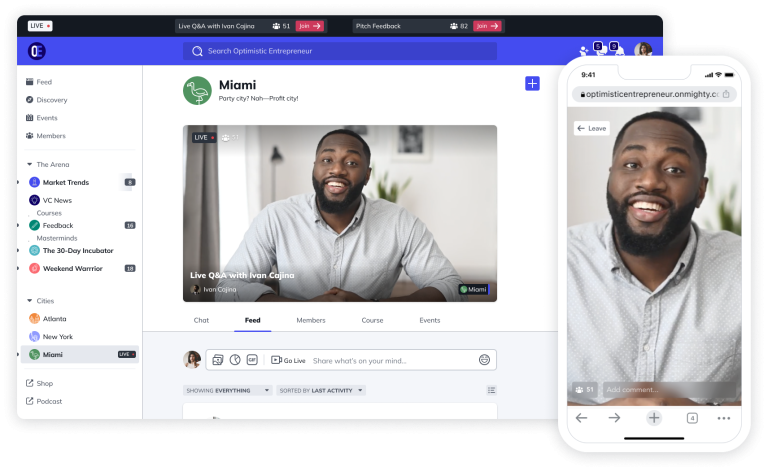Best Practices for Using Social Proof to Sell Online Courses

Social proof helps people feel confident about buying your course. It shows others have already trusted your course and found value in it.
Understanding the Power of Social Proof
When potential students consider buying your online course, they face a moment of uncertainty. Will this course deliver the results they want? Is it worth the investment? This is where social proof becomes invaluable.
Social proof operates on a simple psychological principle: people look to others when making decisions. When someone sees that others have taken your course and achieved positive results, it reduces their perceived risk and increases their confidence in purchasing.
People buy confidence in achieving specific outcomes. Social proof bridges the gap between your promises and their trust.
This principle is particularly powerful in online education, where the product is intangible and results aren’t immediately visible. Let’s explore ten effective ways to leverage social proof to boost your course sales.
1. Share Real Testimonials From Past Students
Testimonials provide direct evidence that your course delivers on its promises. They transform abstract claims into concrete results that potential students can relate to.
When collecting testimonials, ask specific questions that elicit meaningful responses:
- “What specific problem did this course help you solve?”
- “What tangible results have you achieved since completing the course?”
- “How has this course changed your approach to [subject]?”
Place these testimonials strategically throughout your sales page, especially near key decision points like pricing information and enrollment buttons. This positioning addresses doubts precisely when they’re most likely to arise.
2. Display Your Student Numbers
Highlighting how many people have enrolled in your course creates what marketers call “popularity proof.” Large numbers signal that many others have already trusted your course, making it seem like a safer choice.
There are several effective ways to showcase these numbers:
Milestone Announcements:
🎉 Just welcomed our 1,000th student! 🎉
Join the community of successful learners today!Update these milestones regularly to maintain freshness and accuracy. Even if your numbers aren’t huge, you can focus on growth rates or more specific metrics like completion rates or student satisfaction scores.
3. Feature In-Depth Success Stories
While testimonials provide snapshots of student satisfaction, success stories tell complete transformation narratives. These detailed accounts help prospects envision their own journey through your course.
A compelling success story follows this structure:
- The student’s situation before taking your course
- The specific challenges they were facing
- Their experience with your course content
- The tangible results they achieved afterward
- How these results impacted their life or career

Present these stories in multiple formats (blog posts, videos, or podcast episodes) to reach students with different content preferences.
4. Leverage Expert Endorsements
An endorsement from a recognized authority in your field carries significant weight. Their approval transfers credibility to your course and positions it as a respected resource.
When seeking expert endorsements:
- Approach professionals who share your target audience
- Offer complimentary access to your full course
- Ask for specific feedback on what they found most valuable
- Request permission to share their comments publicly
Display these endorsements prominently, including the expert’s name, credentials, and photo, to maximize their impact.
5. Collaborate With Influencers
Partnerships with influencers can introduce your course to new audiences while adding another layer of social validation.
Effective influencer collaborations typically involve:
- Offering the influencer free access to experience your course
- Providing them with a unique affiliate link or discount code
- Encouraging them to share their honest experience with followers
- Creating exclusive bonus content for their audience
The key is finding influencers whose audience aligns with your ideal students and whose values match your teaching philosophy.
6. Showcase Authentic Reviews
Reviews differ from testimonials in that they’re typically unsolicited and appear on third-party platforms, making them particularly credible.
To leverage reviews effectively, make the review process straightforward for students after they complete your course by providing direct links or simple forms. Always respond thoughtfully to all feedback (both positive and negative) showing that you value student input and are committed to continuous improvement.
When showcasing reviews, prioritize those that mention specific outcomes or transformations rather than generic praise, as these concrete results carry more weight with potential students.
If your course maintains a strong average rating (4.5+ stars), display this metric prominently on your sales page, as high ratings serve as immediate visual validation of your course’s quality. Consider creating a dedicated reviews section that pulls in ratings from trusted platforms to enhance credibility through third-party verification.
7. Highlight Media Mentions

If your course has been featured in publications, podcasts, or other media outlets, these mentions serve as powerful external validation.
Create an “As Seen In” section on your course page displaying the logos of media outlets that have mentioned your course. Link to the actual features when possible, and include brief excerpts from any particularly positive coverage.
This type of social proof works because it suggests that professional evaluators have deemed your course worthy of attention.
8. Showcase Your Active Community
If your course includes a community element, highlighting its activity demonstrates ongoing value beyond just the course content.
Effective ways to showcase community engagement include:
- Sharing anonymized screenshots of helpful discussions
- Highlighting the number of active participants
- Featuring student collaborations or networking successes
- Mentioning exclusive events or Q&A sessions
This approach is particularly effective for courses where peer learning and support are important components of the overall experience.
9. Display Concrete Before-and-After Results
Visual evidence of student transformation creates compelling proof that’s hard to ignore. These comparisons help potential students visualize their own potential progress.
Effective before-and-after demonstrations might include:
- Work samples showing skill development
- Performance metrics showing improvement
- Income or business growth charts
- Career advancement timelines
Always obtain permission before sharing student results, and provide context that explains what the student did to achieve these outcomes.
10. Feature Certifications and Credentials
If your course offers certifications or is recognized by industry organizations, these credentials serve as institutional social proof.
Display relevant logos, accreditation information, and explanations of what these credentials mean in practical terms. This approach is particularly effective for courses in professional development fields where formal recognition carries weight.
Making Your Social Proof Strategy Work
The most effective approach combines multiple forms of social proof throughout your marketing materials. Start with what you have available now, then systematically build your evidence library.
Authenticity is paramount. Never fabricate social proof or use testimonials from people who haven’t actually taken your course. One discovered false claim can destroy trust permanently.
When implemented thoughtfully, social proof creates a virtuous cycle: happy students share their success, which attracts new students, who then share their own positive experiences.






